Sailboat Keel Types: Illustrated Guide (Bilge, Fin, Full)
The keel type is one of the most important features of your boat. But the different designs can be confusing, so I've set out to create a very clear guide that will help you understand sailboat keels once and for all.
What are the most common sailboat keel types? The most common sailboat keel types are full-length keels, fin keels, bulb keels, wing keels, bilge keels, and lifting keels. Full keels are popular among cruisers, while fin keels are generally used for racing. Bilge keels and lifting keels are typically used in tidal waters, on small fishing boats for example.
In this article, we'll explore the most common keel types together. I'll use diagrams to really hit home the differences of all these keel types, and we'll discuss what keel types are best for liveaboard, ocean cruising, and lake weekend trips. After reading this article, you'll know what to choose - and why.

Sailboat Keels Explained
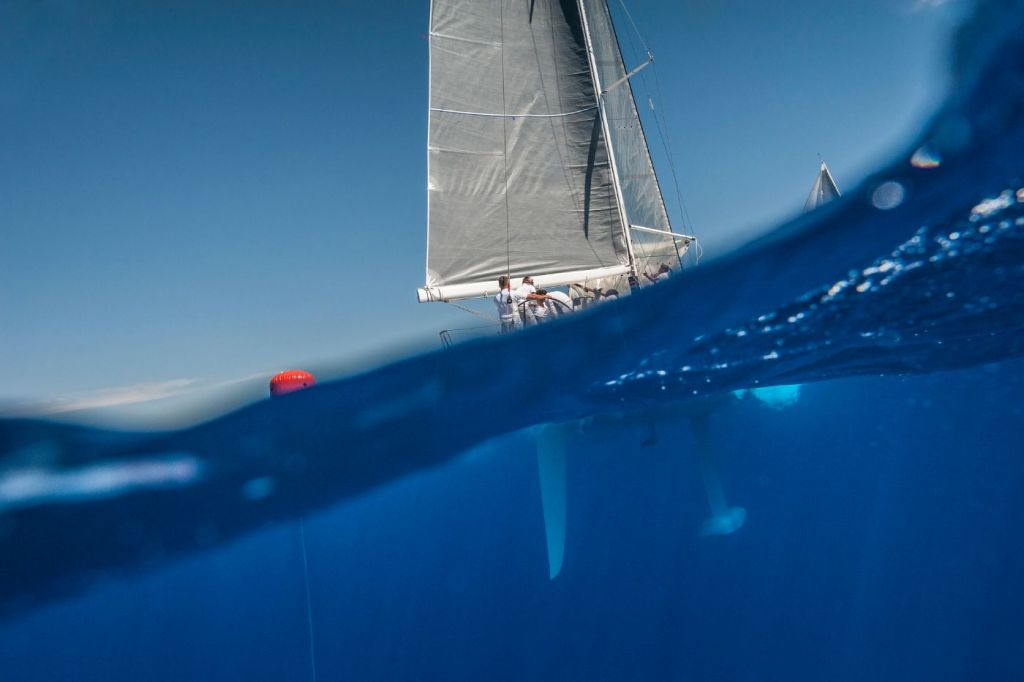
Overview of Sailboat Keel Types
If you just want a quick overview, here's a list with the most common keel types and a short description. More detail will follow below.
The most common keel types
- Full keels run from front to aft and are the most stable keel type, making them the most popular cruising keel.
- Fin keels offer the best performance but are less comfortable. This makes them popular for racing. Fin keels are bolted on to the hull and generally run deep and thin.
- Bulb and wing keels are both variants on the fin keel.
- Bulb keels carry additional ballast in the tip, making them more stable.
- Wing keels have two tips at the end of the keel, which reduces crossflow, improving directional stability.
- Bilge keels are double fin or double full kees, which allows the boat to be beached, making them the most popular keel for tidal waters.
- Lifting keels are moveable keels that can be lowered and raised, allowing the boat to enter shallow waters as well.
- Centerboard keels are a pivoting lifting keel, allowing to sail both coastal and inland waters.
- Leeboards are fins on the sides of flat-bottomed hulls boats, making a keel unnecessary.
Properties of each keel type
| Keel type | Comfort | Maneuverability | Speed |
|---|---|---|---|
| Full keel | +++ | -- | -- |
| Modified full keel | +++ | - | - |
| Fin keel | - | ++ | ++ |
| Bilge keel | + | + | - |
| Lifting keel | - | ++ | ++ |
| Leeboards | -- | -- | +++ |
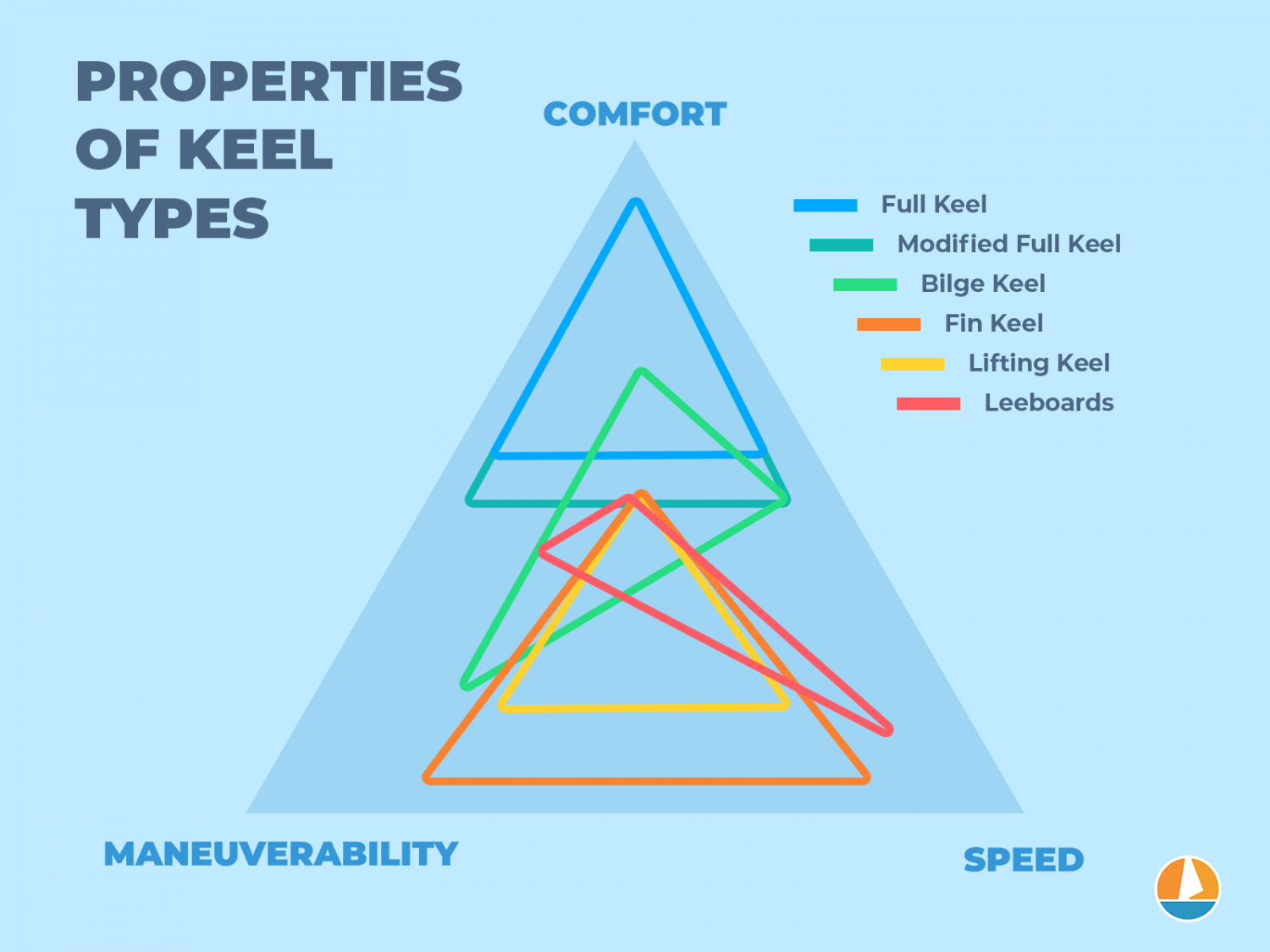
What does a keel do?
What does the keel do? A keel is a vertical blade running down from the hull. It is weighted and acts as a ballast, countering the boat's tendency to heel and preventing it from tipping over. The wetted surface under the waterline reduces slippage to leeward by creating a track, which counters the sideway force of the wind on the sails.
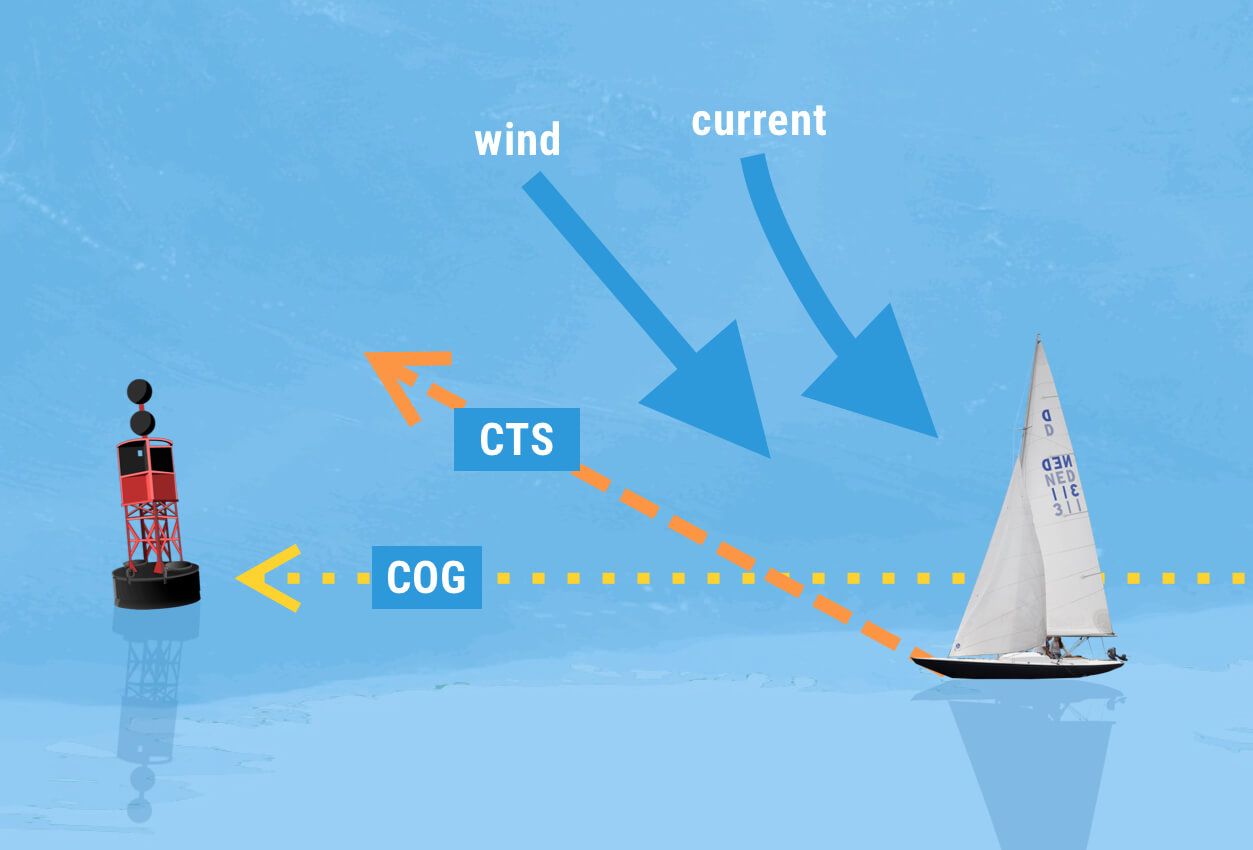
The reason sailboats don't tip over is that the weight of the keel counters the buoyancy of the hull, which means it will pull the boat downward. This downward force reduces heel and prevents the boat from rolling.
A canoe doesn't have a keel. Try stepping into that: it will want to roll.
It counters the horizontal force the wind puts on the sails. Whenever the force on the sails increases, the resistance of the water on the keel increases proportionally.
The heavier the keel, the less heel you'll get.
A keel reduces slippage to leeward. Slippage is simply the amount you fall off course because of the direction of the wind and current. Leeward is the side of the boat behind the wind.
So if you don't have a keel, you will fall off course quite a lot because the wind will push you over the water surface.
You will also heel quite a lot since there is nothing beneath the water surface to counter the force of the wind high up in your sails.
A keel fixes both of these issues and makes sailboats one of the most reliable boats in heavy winds and storms.
You can read on about how keels work here.
Keel Types: Fundamentals
Keels can be classified by multiple dimensions. You can look at them from the side or the front. You can also classify them based on properties.
Before I dive into each keel type in-depth and show examples, let's make sure we have the same starting point.
There are essentially two sorts of keels:
- Fixed keels
- Movable keels

Fixed keels
Fixed keels are keels that are integrated into the hull or bolted on. They can't be moved or lifted.
When looking at fixed keels, you can divide them up further based on the side view. There are three main categories:
- Full keels
- Fin keels
- Bilge keels
Full keels
Full keels are more comfortable, provide better stability and protection, but are also slower than fin keels.
Fin keels
Fin keels are less comfortable, provide less stability, are more vulnerable, but they're also a lot faster than full keels.
Bilge keels
Bilge keels are double keels: one on each side of the hull. This allows them to be beached, which comes in handy in tidal waters. They are generally a lot slower and less maneuverable compared to fin keels.
Movable keels
Movable keels can be lifted from the water, creating a shoal (shallow) draft, allowing the boat to enter both shallow waters and coastal waters. This makes it a very versatile keel type. There are two main designs:
- Lifting keels
- Leeboards
Lifting keels
Lifting keels can be lowered and raised through a slit in the hull. Examples of lifting keels are the daggerboard and centerboard.
Leeboards
Leeboards are wooden swords attached to the side of the hull and prevent slippage to leeward, but they don't stabilize the boat, nor counter heel by adding ballast.
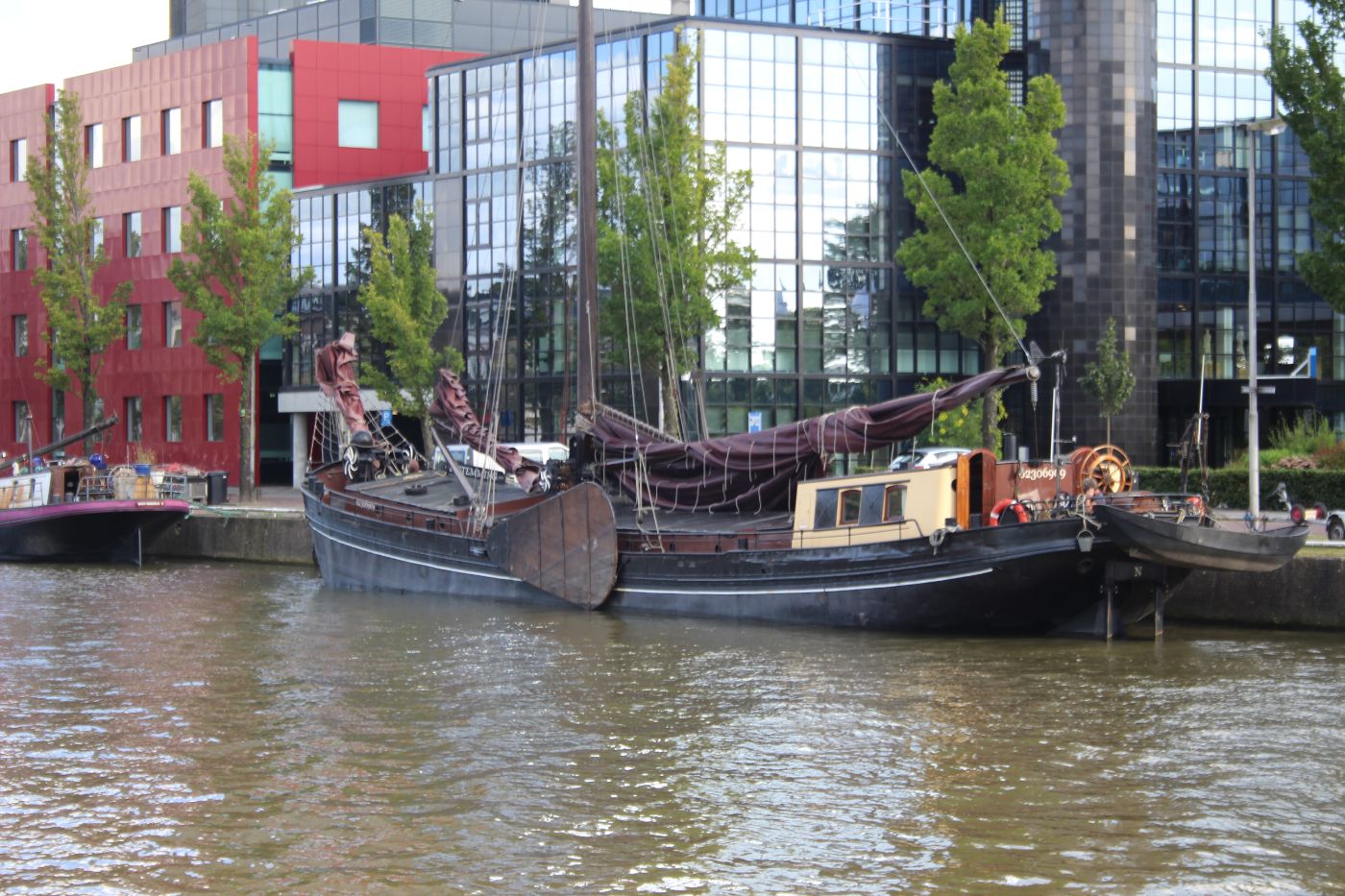
Tip design
With fin keels, there are different tip designs available. The most common two tip designs are:
- Bulb keels
- Wing keels
These are both variants of the fin keel. Generally, these keel designs are mentioned in one breath with full keels and fin keels, creating confusion on what kind of keel they are. But it's important to understand that they are a sub-category of fin keels.
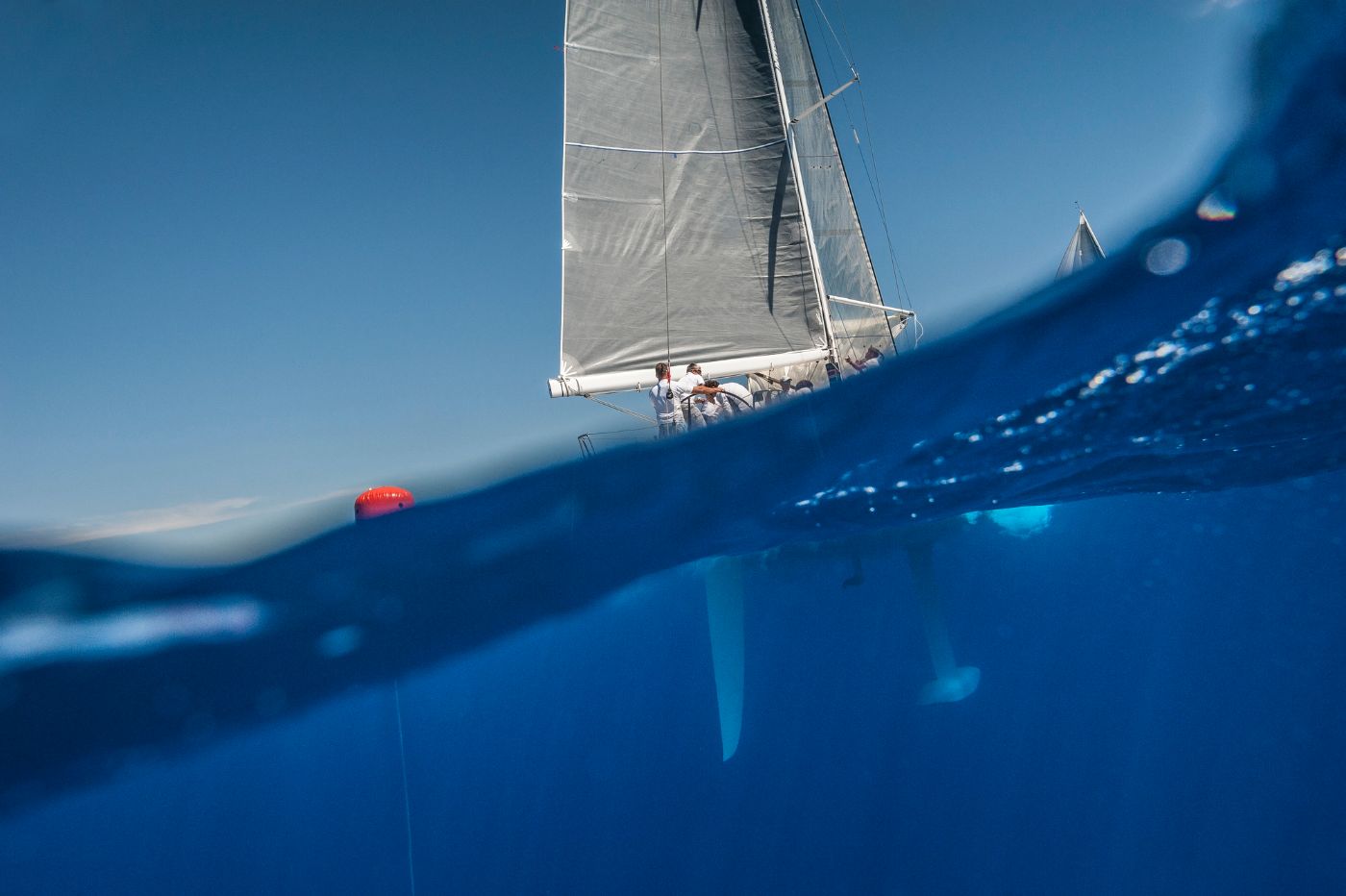
Rudder design
As with the tip of the fin, there are different rudder designs that may apply to both fin and full keels. The two most common rudder designs are:
- Skeg rudder
- Spade rudder
Skeg rudder
A skeg is a structural part of the keel in front of the rudder that protects the rudder. The keel encompasses the rudder, preventing any rogue ropes, weeds, or rocks from damaging the rudder.
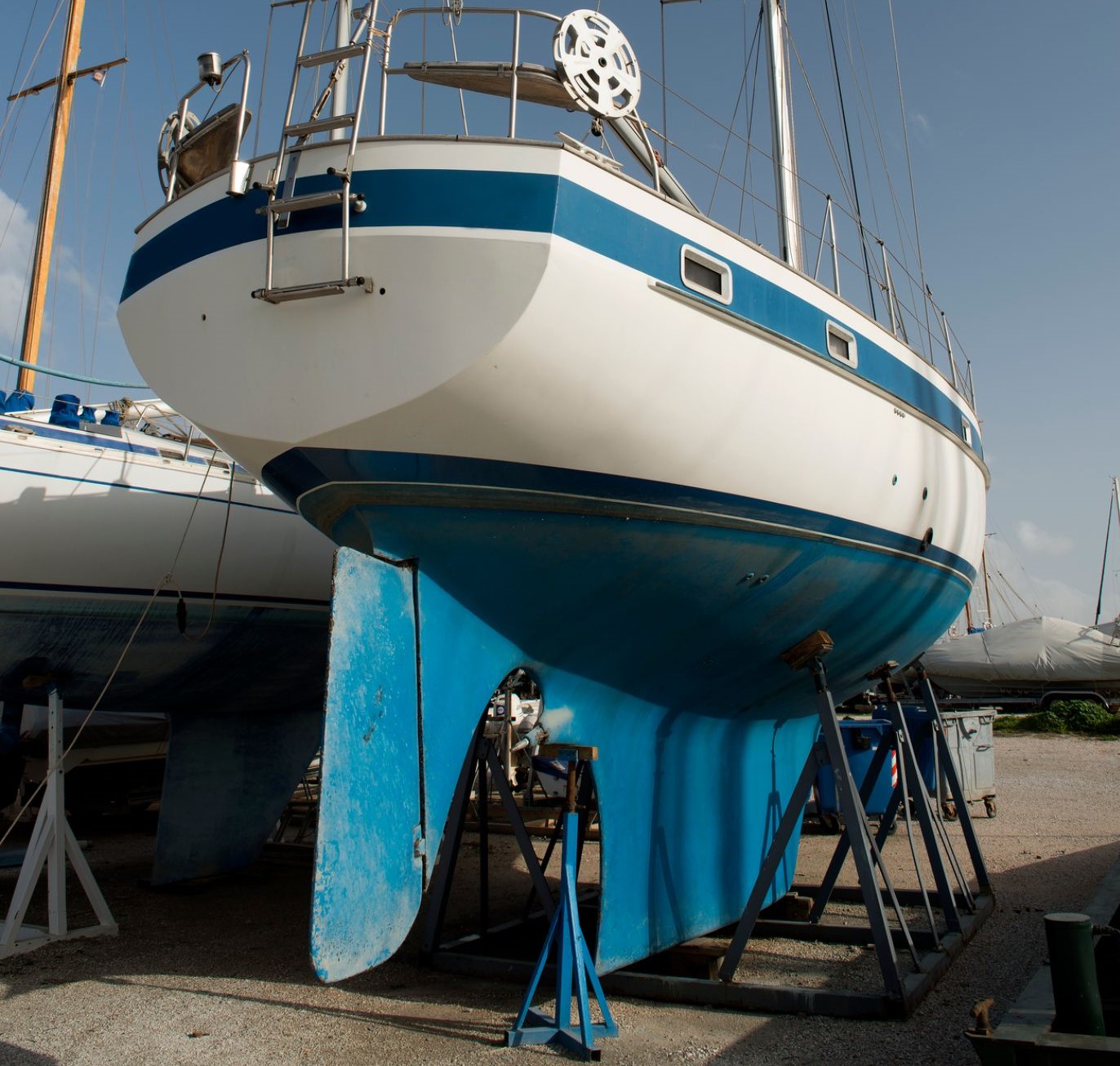
Spade rudder
A spade rudder is an unprotected rudder: it doesn't have any structural protection from the keel design. It is simply attached to the hull. This design is very common.
Alright, we understand the big picture. Let's dive into more detail for each keel type and discuss the pros and cons.
Full Keel
- Fixed keel
- Good for cruising and liveaboards
- Comfortable
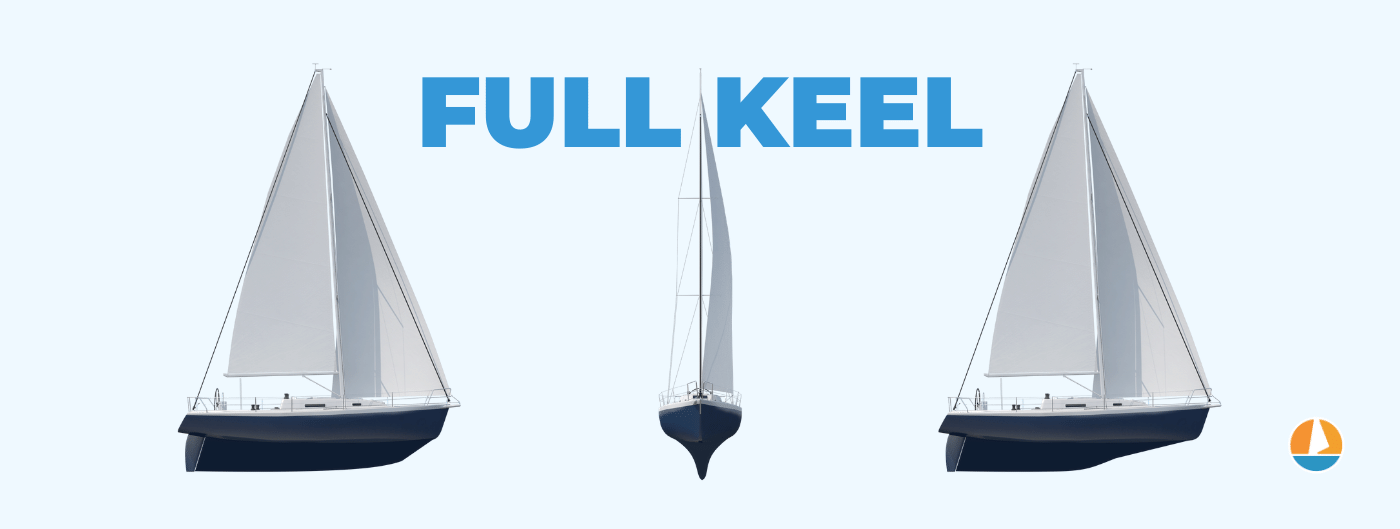
What is a full keel? A full keel runs from front to aft for at least 50% of the hull and is fully integrated into the hull. It has the largest wetted surface of any keel type, and it is also the heaviest. This results in directional stability and reduced heeling, providing the most comfortable ride, but also the slowest.
The wetted surface simply means the amount of water contact area. With such a large wetted surface, it decreases slippage to leeward the most of all keel types, while it counters heeling the most as well.
The full keel is the most comfortable and stable keel type available. However, comfort comes at a price. It delivers the worst performance due to this large wetted area. It is the slowest of the keel types, and it has the worst windward performance.
This makes full keels particularly great for longtime cruisers or liveaboards who prefer comfort over speed, but less ideal for daysailers who need to navigate in and out of slips regularly.
Since it runs for at least 50% of the hull, it doesn't need to run as deep as a fin keel, resulting in a more shoal draft.
Heavier keels result in increased displacement, so a full keel boat will need a larger sail area to compensate for its weight.
For a more detailed discussion on full keel advantages, I recommend reading William's excellent article 5 Surprising Advantages of a Full Keel Sailboat here.
Example sailboats with a full keel:
- Nicholson 22
- Island Packet 380
- Beneteau Oceanis 411 Clipper
- Beneteau First 50
- Jeanneau Sun Shine 38
- Dufour 455 Grand Large
There are a lot of great cruising boats with full keel designs, some of them considered classics.
Full Keel with skeg rudder
Full keels with a skeg rudder design have a protected rudder, thanks to putting a structural part of the keel directly in front of the rudder. This helps with fending off any hazards to the rudder, like floating pieces of rope, rocks, or garbage, and protects it in case of running aground. The skeg design ensures the rudder is nearly impossible to break off.
Modified Full Keel
- Fixed keel
- Good for cruising and liveaboards
- Faster than a regular full keel
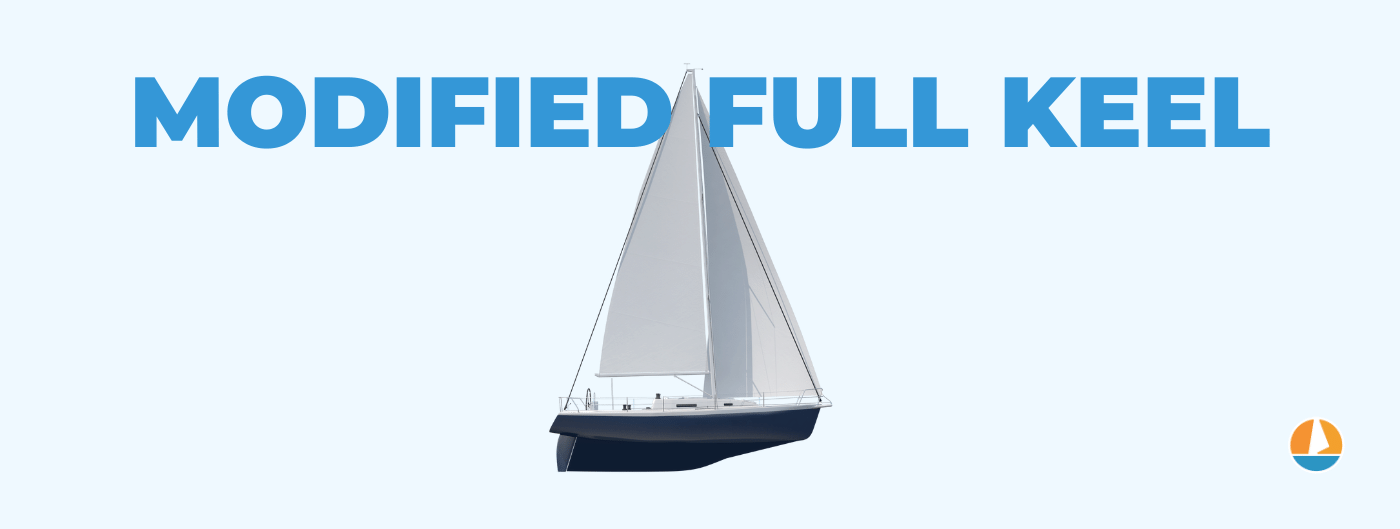
What is a modified full keel? A modified full keel is a full keel with a cutout at the front, reducing the wetted surface slightly, which increases performance without sacrificing too much comfort and stability. After the full keel, it has the best directional stability and the least amount of heel.
The modified full keel is popular among (bluewater) cruisers, thanks to its increased handling and performance. Most modified full keels have a skeg rudder, ensuring it is well-protected.
The slightly reduced weight and wetted surface improve windward performance quite a lot, but it is still one of the most stable keel designs out there.
Example sailboats with a modified full keel:
- Hallberg-Rassy HR 40
- Sunwind 27
- Dufour Arpege 30
- Beneteau Oceanis Clipper 281
- Jeanneau Sun Odyssey 37.2
Fin Keel
- Fixed keel
- Good for racing
- Fast

What is a fin keel? A fin keel is a long, weighted blade attached to the bottom of the hull. It is lighter, faster, and more maneuverable than a full keel, but also more vulnerable. The increased distance between ballast and sails provides a lever, reducing the need for a large wetted surface or additional ballast.
Fin keels are generally bolted onto the hull and run deeper and thinner than a full keel. They are also lighter. This helps increasing performance (a lot), making fin keels a lot faster in all situations.
There are some major disadvantages to fin keels, however. Fin keels are a lot less comfortable than full keels and allow for more heel and a less solid track, so less directional stability. Fin keels are also a lot more vulnerable than full keels. They can break off when running aground, or get damaged.
They are very popular among racers and perform better when maneuvering in tight spots, like getting in and out of slips.
Example sailboats with a fin keel:
- Catalina 30
- Hunter 34
- Bavaria 40
- Jeanneau Sun Odyssey 36.2
Fin keel with skeg rudder
Fin keels with a skeg rudder use a small structural part in front of the rudder to protect it. This design is mostly integrated into the hull, making it less vulnerable, and a great compromise between speed and safety.
Fin keel with spade rudder
Fin keels with a spade rudder have a completely exposed rudder, and typically a fin that is simply bolted on. The keel isn't integrated into the hull, making it more vulnerable and less comfortable.
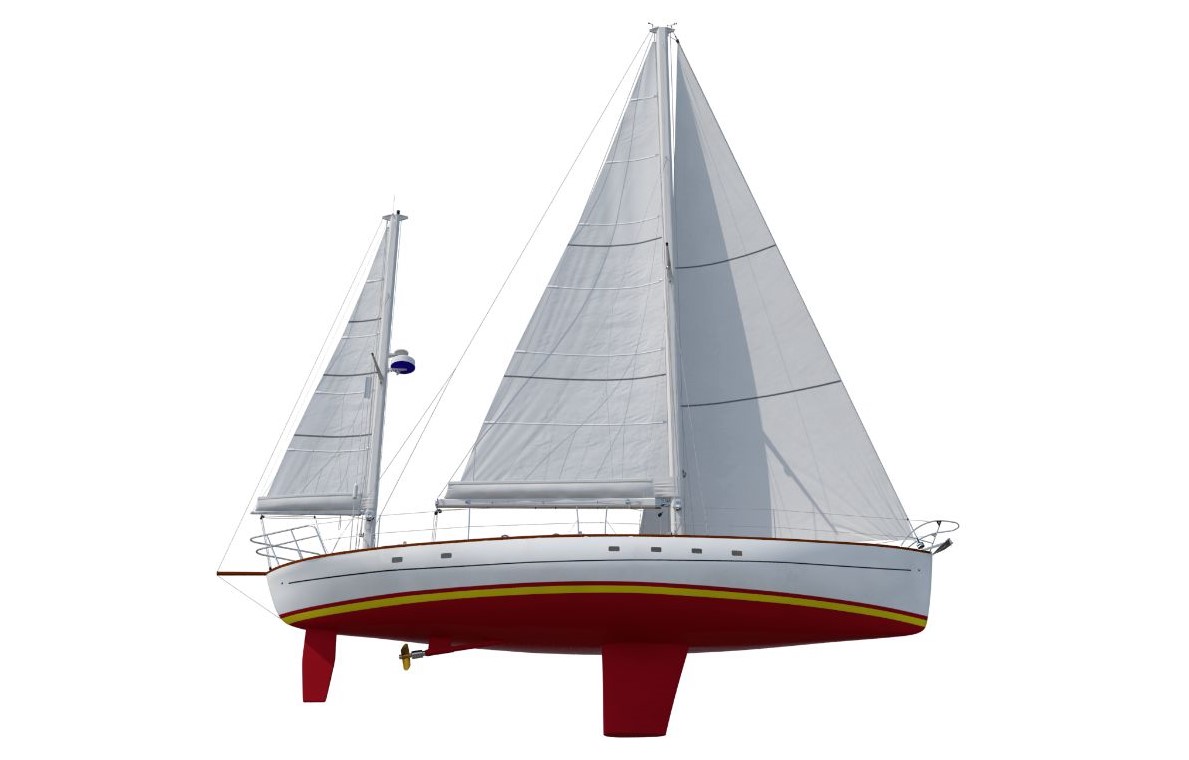
Wing Keel
- Fin keel variant
- Good for cruising
- Less crossflow
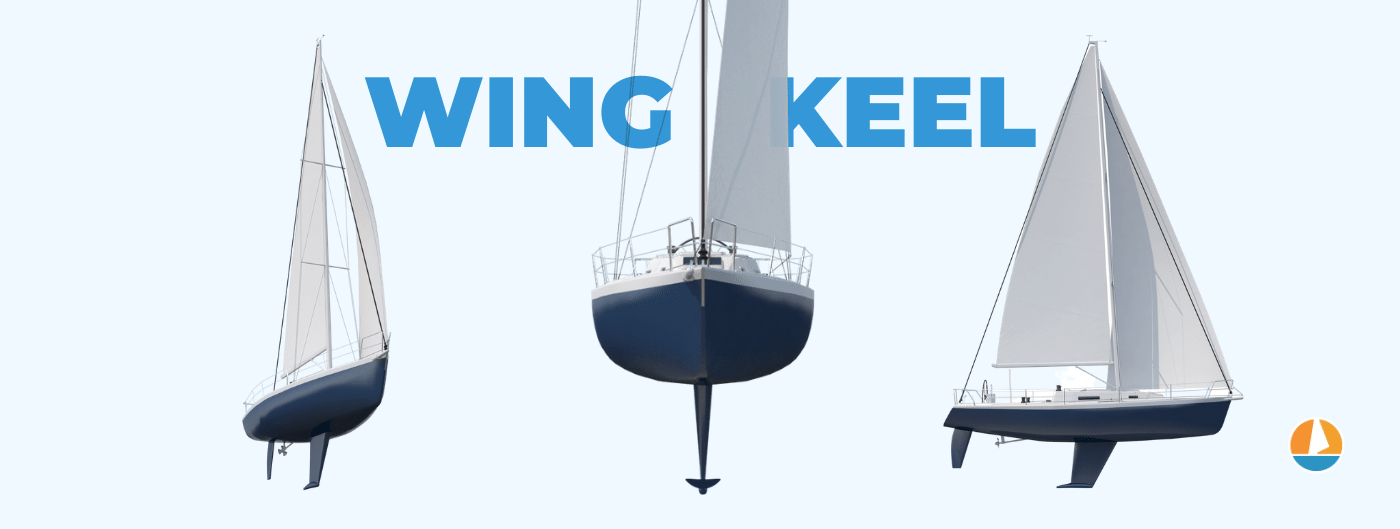
What is a wing keel? A wing keel is a fin keel with a horizontal foil at the tip, which is wing-shaped and generally weighted. Its shape reduces crossflow, improving directional stability, and its ballast decreases heel, resulting in a more comfortable ride. The addition of a wingtip allows for a shorter fin, reducing draft.
Wing keels are good for cruising since this design improves directional stability compared to a regular fin keel or a bulb keel.
We'll discuss the wing keel's advantages and disadvantages in more detail in this article.
Bulb Keel
- Fin keel variant
- Good for cruising
- Stability
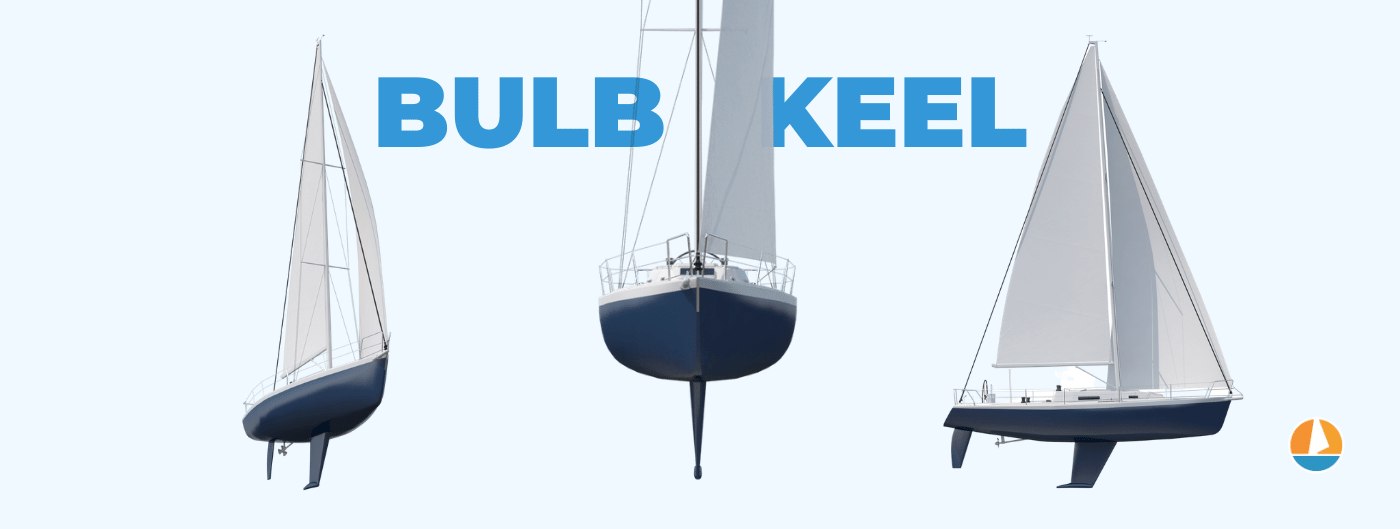
What is a bulb keel? A bulb keel is a high-aspect-ratio fin keel with additional ballast at the end, which generally has a bulb or teardrop shape. This ballast improves stability and utilizes the distance between force and counterforce as a lever. This design reduces the need for a deep fin, resulting in a shoal draft.
By placing the weight at the largest possible distance from the force on the sails, you need relatively little extra weight for the same reduction in heel, making bulb keels very effective for cruising.
This design reduces the wetted area while increasing the weight of the keel just slightly, which increases sailing comfort big time.
Example sailboats with a bulb keel:
- Bavaria B/One
- Enigma 34
- Beneteau First 24
Bilge Keel
- Fixed keel
- Good for racing
- Can be beached
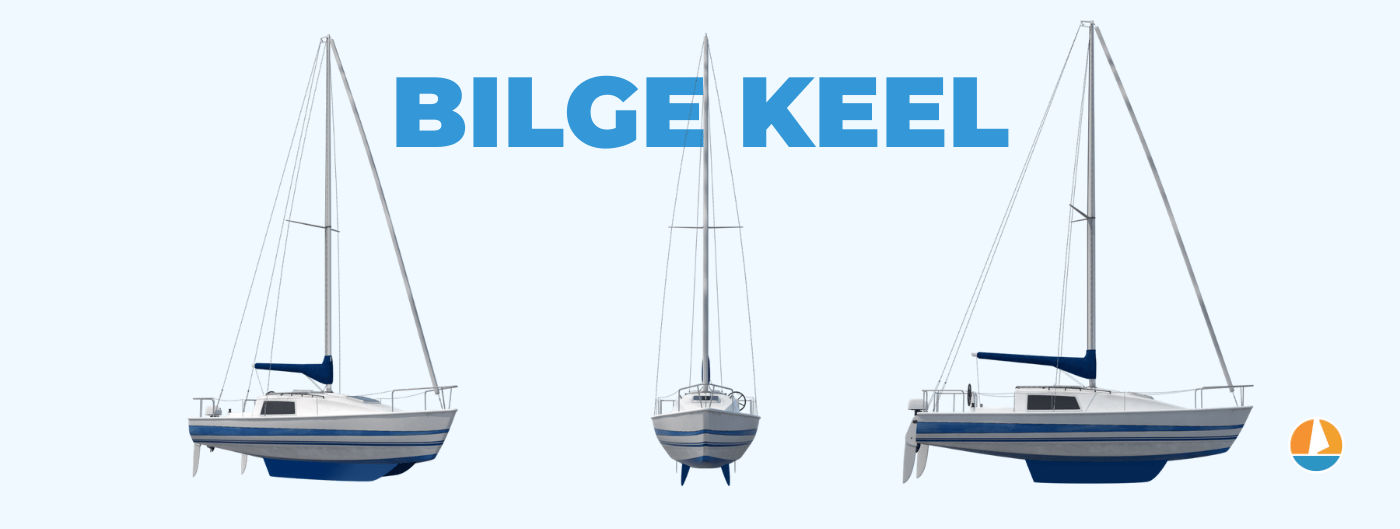
What is a bilge keel? A bilge keel is a twin keel which uses double fins, allowing the boat to be beached and rest on its keel upright. Bilge keels have double the wetted surface, which increases comfort and directional stability while decreasing heel. Modern bilge keels often provide decent windward performance, thanks to better design.
The bilge keel does sacrifice speed compared to the fin keel but doesn't necessarily offer worse performance overall. Older designs performed considerably worse than other keels and were especially slow.
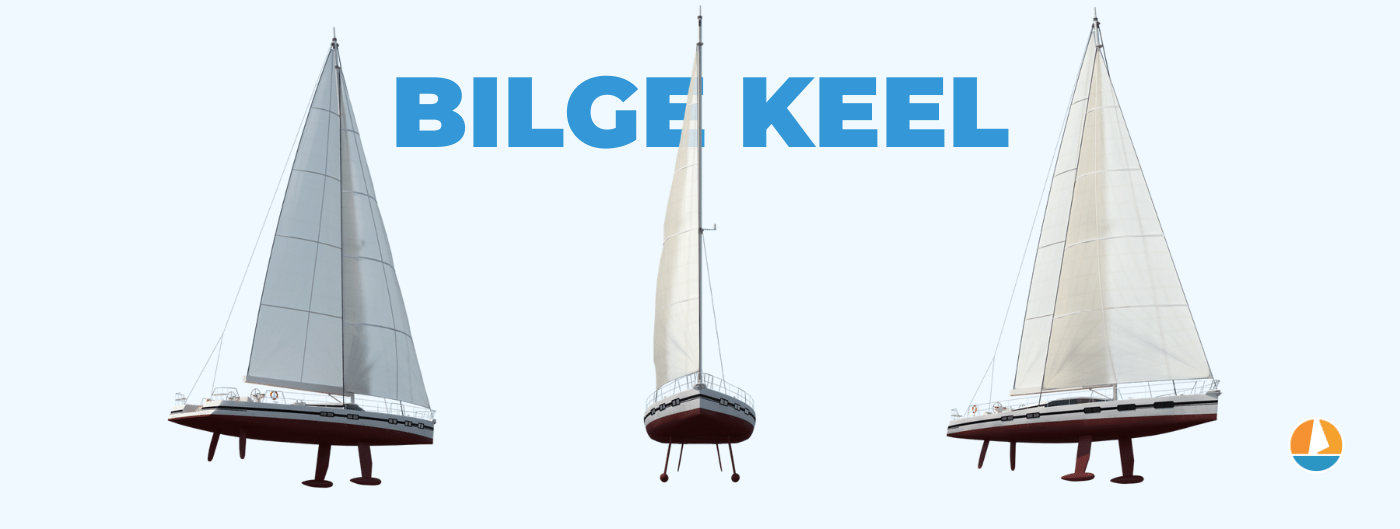
Bilge keels have some major advantages over full keels and fin keels. The most important is that the boat can be beached, making it a popular design in tidal waters. Bilge keels are especially common along the British coastline, where fishermen keep their boats in tidal harbors.
Another major advantage is that the boat can be stored resting on its keels, making dry storage and maintenance a lot easier.
Of course, there are many more pros and cons to the bilge keel, which we go into here.
Example sailboats with a bilge keel:
- Dufour Dynamique 62
- Hunter Duette
- Patagonia Patago 39
- Macwester 27
- Moody S31
Centerboard
- Lifting keel
- Good for daysailers
- Versatile
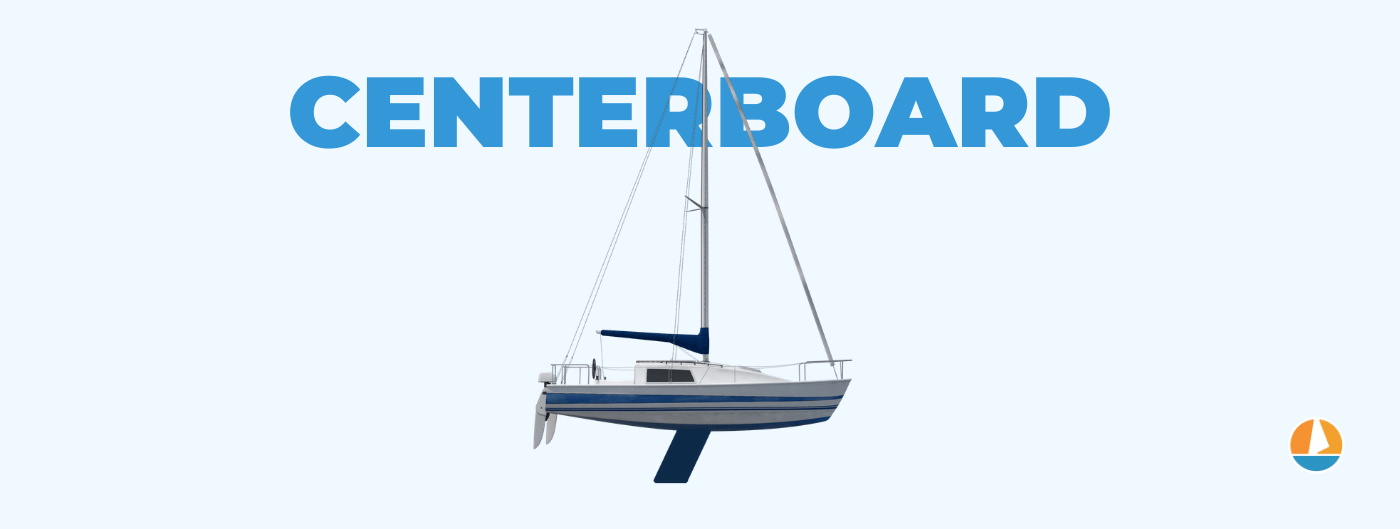
What is a centerboard? A centerboard is a type of retractable keel that rests on a hinge and can be lowered through a slot in the hull. It folds out like a pocket knife and allows you to increase or reduce the draft of the boat. Centerboards are mostly used on small fishing boats.
The centerboard is a very versatile keel type, allowing you to have both a very shoal draft for inland waters, as well as steadying the boat and reducing heel for larger bodies of water, or even oceans.
I've sailed a Cornish Crabber with a centerboard for a week, and while we stayed inland, having the option to increase the keel depth really came in handy when crossing the IJsselmeer (a former sea in The Netherlands).
There's more to the center
Did you find the answer to your specific question?
👍 3 👎 3
Comments
Olaf Roethele
https://www.theyachtmarket.com/en/new-boats/cornish-crabbers/adventure-17/218/
Hello,
My name is Olaf and I am the owner of a Cornish Crabber 17 Adventure boat.
I would like to ask you if you can imagine to install on this boat a Torqeedo 2.0 Pod motor? Therefore i guess a modification of the keel/skeg is necessary ?!
Best regards from Uruguay,
Olaf
Alan Carr
You completely missed the hybrid planing/water-ballast keel of the Macgregor range
Jake
Thanks a lot for this explanation
Roger Bannon
Very well written article which provides an excellent guide for us small wooden boat builders. Thanks.
Hulda Whiddon
Great job site admin! You have made it look so easy talking about that topic, providing your readers some vital information. I would love to see more helpful articles like this, so please keep posting! I also have great posts about Airport Transfer, check out my weblog at <a href=”https://rosuchebnik.ru/bitrix/redirect.php?goto=http://uy5.de/flyingstar/flughafentransfer-frankfurt-rech">UY5</a>
Leave a comment